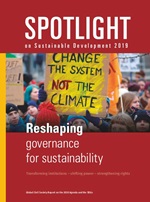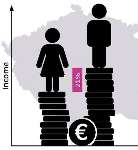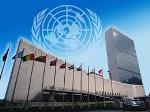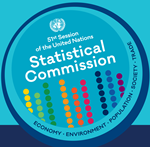Social Watch news
Published on Thu, 2020-03-19 23:45
 |
SDG 6, Ensure availability and sustainable management of water and sanitation for all, represents one of the easiest – and most fundamental – parts of the 2030 Agenda to achieve. Dynamics of power and inequality shape access to water, sanitation and hygiene (WASH) and other basic services, both in terms of tangible metrics (income, nearness and type of family toilet or water source) and because of the unequal distribution of influence over decision-making - the gulf between whose rights and voices count and whose do not. Raising the political leverage of communities facing discrimination in infrastructure and service provision is key in changing the power relationships between users and providers. The preconditions for universal access to WASH at national level must be matched by commitments at international level: to significantly increase official development assistance (ODA), restructure debt, curb illicit financial flows and stimulate new sources of international public assistance through democratic institutions.
|
Published on Thu, 2020-03-19 22:03
Social Watch Philippines, together with a number of Filipino academics and civil society representatives, present a policy matrix that identifies urgent issues, provides analyses and outlines recommendations on trade and development from a wide range of actors from civil society, the academe, and private sector in time for the preparatory process leading to the UNCTAD XV Conference to be held in Barbados from 18 to 23 October 2020.
|
Published on Tue, 2020-02-25 10:05
The Czech Republic has enjoyed steady economic growth, low inflation and low unemployment in recent years. Income inequality (Gini coefficient 0.25) is the third lowest among OECD countries. In 2018 the proportion of citizens at risk of income poverty (relative poverty - with an income of 60% or less of the national median) were about 10% of the population, while those in absolute poverty (‘materially deprived’) were 8% of the population. Older citizens (65+ years) are worse off than other age groups. In 2018, 10% of households with children (30% of which were single- adult households - single mother or single father) found themselves in income poverty. Furthermore, Czechia has one of the highest proportions of homeless people in the European Union (0.65 % of the population).
|
Published on Tue, 2020-02-25 09:49
The potential of partnerships with the private sector dominated the narrative characterizing the initial phase of implementation of the 2030 Agenda for Sustainable Development. In relation to SDG 2, a prominent multi-stakeholder platform is the Scaling Up Nutrition ‘Movement’. Laura Michéle and Kavya Chowdhry (FIAN International), Patti Rundall (IBFAN) and Stefano Prato (SID) explain that as documented by a multi-country study, this case exposes how interventions promoted by MSPs often do not address the social, cultural, economic and political determinants of malnutrition and rather emphasize short-term, technical interventions, owing to private sector influence in the context of a consensus driven process.
|
Published on Thu, 2020-02-20 19:13
On 28 January 2020 the President of the General Assembly (PGA), Tijjani Muhammad-Bande, and the President of ECOSOC, Mona Juul announced a new initiative: “a high-level panel on international financial accountability, transparency and integrity (FACTI)”. This joint endeavour is framed as a means to target and recover assets for investment in the Sustainable Development Goals.
At present, the UN estimates the financing gap to achieve the Sustainable Development Goals (SDGs) totals a staggering $2.5 trillion. Proponents of a robust and strong agenda on tackling illicit financial flows (IFFs) suggest that this gap could in part be closed by addressing the various forms of illicit financial flows that divert or “rob” governments of vital public resources that could and should be invested in public goods to achieve the SDGs.
|
Published on Wed, 2020-02-19 14:12
How to capture and manage big data? This is a question that will confront the 51st session of the UN Statistical Commission in March 2020 as they review the official reports. The four-year process of finalizing the global indicator framework to measure the 169 targets of the SDGs is drawing to a conclusion with the acceptance by the IAEG-SDGs of 8 additional indicators, 14 replacement indicators, 8 revised indicators and 6 deleted indicators. The framework has gone to the Commission for approval in March and the focus of different players in the data and statistics community is shifting to the management and use of data to influence and shape development policy agendas.
|
Published on Tue, 2020-02-18 00:00
The year 2020 is starting with mass protests shaking a growing number of countries in various regions of the world. In Ecuador, Chile and Argentina, in Egypt and in Lebanon, millions of people are taking to the streets to demonstrate against the prevailing policies. The protests reflect growing discontent of people in different countries and regions with real and perceived injustices, rising inequalities and unjust adjustments and transition policies.
Governments mostly reacted with austerity policies to the massive increase in foreign debt and the deterioration in macroeconomic conditions. This was partly due to pressure from the financial markets, creditors, and international financial institutions like the International Monetary Fund (IMF), which coupled the granting of loans to bridge payment difficulties with a reduction in public spending and a strict austerity- type adjustment conditions.
There is a great danger that the situation will deteriorate further in the years 2020-2021. In a comprehensive study, economists Isabel Ortiz and Matthew Cummins call global austerity policy "The New Normal" and predict a renaissance of the neoliberal Washington Consensus. In an alarming number of 130 countries, they forecast cuts in government spending and other austerity measures over the next two years. The regulatory and fiscal capacity of many governments (their policy space) will thus be considerably restricted - and thus also their ability to implement Agenda 2030 and its Sustainable Development Goals (SDGs). The implementation of the SDGs requires massive public investment in the areas of health and education, social security, infrastructure and climate protection. The vicious circle of foreign debt and austerity policies threatens many countries to move away from sustainability goals rather than achieve them by 2030.
|
Published on Wed, 2020-02-12 08:38

Photo by Elena Malmo
|
"Last year over 200 defenders of Human Rights and the environment were killed in Latin America. They gave their lives for their communities and for the principles that the United Nations stands for. And yet, the statistical framework for the SDGs tells us that the “partnerships” that should contribute to achieve sustainable development will be measured by the dollars they mobilized. The blood spilled by our friends and colleagues doesn't count." During a debate over the 75th anniversary of the UN, at the Pyeong Chang Peace Forum, Social Watch coordinator Roberto Bissio expressed the frustrations of civil society over the lack of meaningful interaction with the UN.
|
Published on Wed, 2020-02-12 00:00

Photo by Elena Malmo
|
Intervention of Barbara Adams, Global Policy Forum, at the Parallel Session “UN2020” of the PyeongChang Peace Forum, Republic of Korea, February 10, 2020.
|
Published on Mon, 2020-02-10 08:57
In the Philippines, the preparation of the country's VNR report 2019 catalysed a multi-stakeholder consultation process to which some CSOs, like Social Watch Philippines (SWP) were invited. SWP, in turn, convened a broader consultation process that will result both in inputs to the VNR as well as in an independent civil society report.
The Philippines is currently one of the fastest growing economies of the world, with GDP hovering around 6 to 7 percent in 2018 and growing at an average of almost 5 percent a year in the last decade, but those figures coexist with a high poverty rate, a paradox situation called ‘jobless growth’.
SWP comments that “there seems to be an unspoken yet dominant perspective on wealth, that as long as poverty is minimized, there should be no objection to the unbridled gains of the rich. It is assumed that wealth will trickle down to the poorest.
|
SUSCRIBE TO OUR NEWSLETTER
Submit

|










